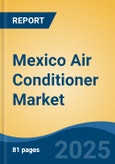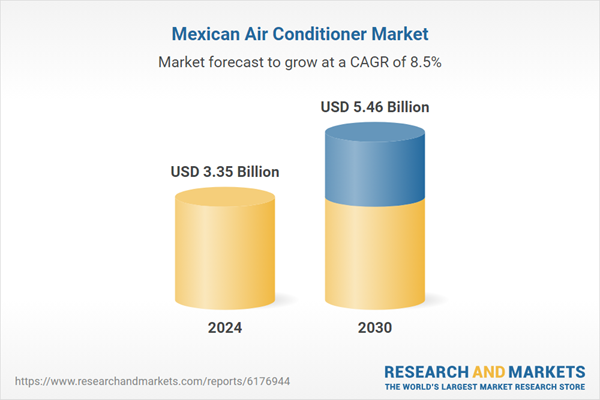Speak directly to the analyst to clarify any post sales queries you may have.
10% Free customizationThis report comes with 10% free customization, enabling you to add data that meets your specific business needs.
The Mexican Association of Online Sales (AMVO) reported that digital buyer penetration in Mexico has reached 84%, highlighting the country's strong contribution to market growth. Changing consumer behavior has played a key role in driving the expansion of e-commerce. The average age of online shoppers stands at 37.4 years, with a nearly even gender split - 51% women and 49% men. These combined factors reflect the dynamic evolution of Mexico's digital commerce landscape and its growing influence in the market.
Additionally, rising disposable incomes, urbanization, and a shift toward premium and personalized offerings are fueling demand across multiple segments. Market players are focusing on product innovation, strategic partnerships, and targeted marketing to capture emerging opportunities and address the dynamic needs of both global and regional consumers.
Key Market Drivers
Rising Consumer Awareness and Lifestyle Changes
One of the most prominent drivers in today’s market is the growing consumer awareness surrounding health, wellness, sustainability, and quality. With increased access to information via digital platforms, consumers are more informed than ever before about the impact of their purchases. This has led to a shift in preferences toward products that are ethically sourced, environmentally friendly, and beneficial to personal well-being. As lifestyles continue to evolve especially in urban settings where convenience and efficiency are highly valued demand for products and services that align with these modern priorities is surging.Whether it's organic food, smart home appliances, or eco-friendly packaging, consumers are actively making choices that reflect their values. This shift is compelling businesses to innovate and align their offerings with new lifestyle norms, creating opportunities for growth across industries such as personal care, food and beverages, electronics, and household products. According to recent global surveys, around 73% of consumers say they are willing to change their purchasing habits to reduce environmental impact. In urban areas, where modern life demands speed and efficiency, 60% of residents prioritize smart, convenient technologies driving the rise of intelligent home appliances and sustainable solutions.
Key Market Challenges
Supply Chain Disruptions and Operational Uncertainty
One of the most pressing challenges faced by industries across sectors is the vulnerability of global supply chains. The interconnected nature of today’s supply networks makes them highly susceptible to external shocks, such as geopolitical tensions, natural disasters, pandemics, and trade policy changes. Events like the COVID-19 pandemic and the Russia-Ukraine conflict have exposed weaknesses in logistics and manufacturing capabilities, leading to delays, shortages, and rising input costs. For businesses, these disruptions not only hinder their ability to meet demand but also impact profitability and long-term planning. Small and medium enterprises (SMEs), in particular, struggle with agility and resource availability during such crises. Companies are now being forced to diversify sourcing strategies, invest in localized manufacturing, and enhance supply chain visibility to reduce dependencies and improve resilience - efforts that often involve substantial capital and time.Key Market Trends
Sustainability and Eco-Conscious Consumption
Sustainability has evolved from a niche concern to a mainstream priority across industries. Today’s consumers, particularly Millennials and Gen Z, are increasingly aware of environmental issues and prefer brands that demonstrate a commitment to eco-conscious practices. This trend is influencing product development, packaging, sourcing, and marketing strategies.Businesses are adopting sustainable materials, reducing carbon footprints, and emphasizing circular economy models such as recycling, reuse, and waste reduction. In the beauty industry, for instance, there is a rise in refillable packaging and biodegradable ingredients. A 2023 study revealed that 42% of Mexicans consider environmental responsibility the most important trait of sustainable products. Furthermore, 70% are willing to pay 5% to 10% more for eco-friendly goods. This growing environmental awareness and willingness to invest in sustainable options are key drivers propelling market growth in Mexico, particularly in sectors like air conditioning, where energy efficiency and green technologies are gaining prominence.
Similarly, the fashion sector is witnessing a surge in upcycled and ethically produced apparel. Government regulations and global initiatives are also reinforcing this trend, pushing companies to meet stricter environmental standards. As sustainability becomes a key differentiator, brands that embed eco-friendly values into their operations and communication are gaining favor among increasingly discerning consumers.
Key Market Players
- Daikin U.S. Corporation
- Mitsubishi Electric US, Inc.
- Johnson Controls-Hitachi Air Conditioning North America LLC
- Carrier Global Corporation
- Whirlpool Corporation
- Haier US Appliance Solutions, Inc.
- LG Electronics U.S.A. Inc
- Panasonic Corporation of North America
- Robert Bosch LLC.
- Samsung Electronics America, Inc.
Report Scope:
In this report, the Mexico Air Conditioner Market has been segmented into the following categories, in addition to the industry trends which have also been detailed below:Mexico Air Conditioner Market, By Product Type:
- Splits
- VRFs
- Chillers
- Windows
- Others
- Mexico Air Conditioner Market, By End Use
- Residential
- Commercial/Industrial
Mexico Air Conditioner Market, By Region:
- North
- Central
- Central North
- South
Competitive Landscape
Company Profiles: Detailed analysis of the major companies present in the Mexico Air Conditioner Market.Available Customizations:
With the given market data, the publisher offers customizations according to a company's specific needs. The following customization options are available for the report.Company Information
- Detailed analysis and profiling of additional market players (up to five).
This product will be delivered within 1-3 business days.
Table of Contents
Companies Mentioned
- Daikin U.S. Corporation
- Mitsubishi Electric US, Inc.
- Johnson Controls-Hitachi Air Conditioning North America LLC
- Carrier Global Corporation
- Whirlpool Corporation
- Haier US Appliance Solutions, Inc.
- LG Electronics U.S.A. Inc
- Panasonic Corporation of North America
- Robert Bosch LLC.
- Samsung Electronics America, Inc.
Table Information
| Report Attribute | Details |
|---|---|
| No. of Pages | 81 |
| Published | September 2025 |
| Forecast Period | 2024 - 2030 |
| Estimated Market Value ( USD | $ 3.35 Billion |
| Forecasted Market Value ( USD | $ 5.46 Billion |
| Compound Annual Growth Rate | 8.5% |
| Regions Covered | Mexico |
| No. of Companies Mentioned | 10 |









